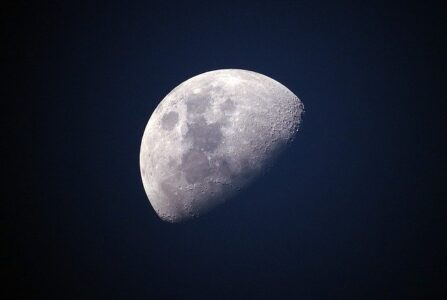Chandrayaan-3
Context:
Chandrayaan-3 is likely to be launched during third quarter of 2022
About Chandrayan-3
- The Chandrayaan-3 is the successor to the Chandrayaan-2 mission and it will likely attempt another soft-landing on the lunar surface.
- It will be almost a repetition of the July 2019 Chandrayaan-2 mission in the configuration of spacecraft, the landing spot on the moon and the experiments to be conducted on the lunar surface.
- Although scores of landers sent by Russia, the U.S. and the Chinese have explored the moon’s surface, so far, no other agency has landed in the southern hemisphere of the moon. ISRO hopes to be the first to do so.
- As per ISRO, the total cost of Chandrayaan-3 mission will be over Rs 600 crores. In comparison, the total cost of the Chandrayaan-2 mission was Rs 960 crores.
Chandrayaan-2 mission:
- In September 2008, the Chandrayaan-2 mission was approved by the government for a cost of Rs 425 crore.
- It is India’s second mission to the moon.
- It aims to explore the Moon’s south polar region.
- The mission is an important step in India’s plans for planetary exploration, a program known as Planetary Science and Exploration (PLANEX).
- There are three components of the mission, an orbiter, a lander and a rover.
- The mission payloads include — Terrain Mapping Camera which will generate a Digital Elevation Model (DEM) of the entire moon, Chandrayaan 2 Large Area Soft X-ray Spectrometer which will test the elemental composition of the Moon’s surface Solar X-Ray Monitor which will provide solar X-ray spectrum inputs for CLASS.
- The orbiter will be deployed at an altitude of 100 kilometers above the surface of the Moon. The lander will then separate from the orbiter, and execute a soft landing on the surface of the Moon, unlike the previous mission which crash landed near the lunar south pole.
- The lander, rover and orbiter will perform mineralogical and elemental studies of the lunar surface.
- The rover is named Pragyan.
- The mission’s lander is named Vikram after DrVikram A Sarabhai, the Father of the Indian Space Programme.
GSLV Mk-III:
- Developed by ISRO, the Geosynchronous Satellite Launch Vehicle Mark-III is a three-stage vehicle.
- Primarily designed to launch communication satellites into geostationary orbit.
- It has a mass of 640 tonnes that can accommodate up to 8,000 kg payload to LEO and 4000 kg payload to GTO.
- GSLV Mk-III vehicle is powered by two solid motor strap-ons (S200), a liquid propellant core stage (L110) and a cryogenic stage (C25), that has been designed for carrying the four-tonne class satellites.
- The C25 is powered by CE-20, India’s largest cryogenic engine, designed and developed by the Liquid Propulsion Systems Centre.
Gaganyaan
- Gaganyaan, announced by the Prime Minister in August 2018, is the ₹10,000-crore Indian human space flight scheduled for 2022. It is designed to have 3-7 crew members spend 3-7 days in space in a 400-km orbit.
- The first of the two pre-Gaganyaan flights with a humanoid will be launched in 2020-end along with some of the six shortlisted microgravity experiments.
- ISRO has already constituted an advisory committee for the Gaganyaan. ISRO has also identified four astronauts whose training will commence in Russia from January in 2020.
Source: The Times of India

